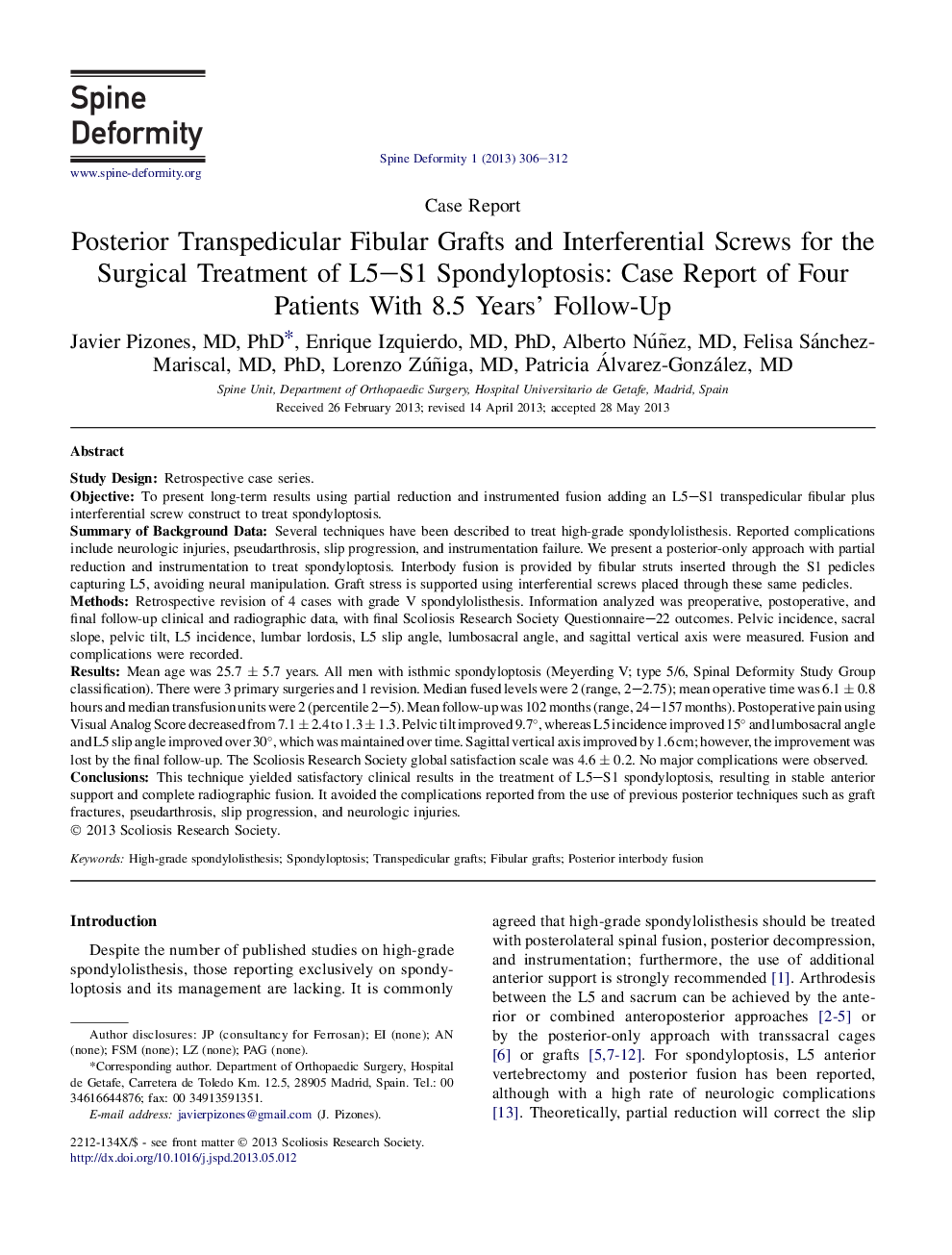| کد مقاله | کد نشریه | سال انتشار | مقاله انگلیسی | نسخه تمام متن |
|---|---|---|---|---|
| 4095694 | 1268544 | 2013 | 7 صفحه PDF | دانلود رایگان |

Study DesignRetrospective case series.ObjectiveTo present long-term results using partial reduction and instrumented fusion adding an L5–S1 transpedicular fibular plus interferential screw construct to treat spondyloptosis.Summary of Background DataSeveral techniques have been described to treat high-grade spondylolisthesis. Reported complications include neurologic injuries, pseudarthrosis, slip progression, and instrumentation failure. We present a posterior-only approach with partial reduction and instrumentation to treat spondyloptosis. Interbody fusion is provided by fibular struts inserted through the S1 pedicles capturing L5, avoiding neural manipulation. Graft stress is supported using interferential screws placed through these same pedicles.MethodsRetrospective revision of 4 cases with grade V spondylolisthesis. Information analyzed was preoperative, postoperative, and final follow-up clinical and radiographic data, with final Scoliosis Research Society Questionnaire–22 outcomes. Pelvic incidence, sacral slope, pelvic tilt, L5 incidence, lumbar lordosis, L5 slip angle, lumbosacral angle, and sagittal vertical axis were measured. Fusion and complications were recorded.ResultsMean age was 25.7 ± 5.7 years. All men with isthmic spondyloptosis (Meyerding V; type 5/6, Spinal Deformity Study Group classification). There were 3 primary surgeries and 1 revision. Median fused levels were 2 (range, 2–2.75); mean operative time was 6.1 ± 0.8 hours and median transfusion units were 2 (percentile 2–5). Mean follow-up was 102 months (range, 24–157 months). Postoperative pain using Visual Analog Score decreased from 7.1 ± 2.4 to 1.3 ± 1.3. Pelvic tilt improved 9.7°, whereas L5 incidence improved 15° and lumbosacral angle and L5 slip angle improved over 30°, which was maintained over time. Sagittal vertical axis improved by 1.6 cm; however, the improvement was lost by the final follow-up. The Scoliosis Research Society global satisfaction scale was 4.6 ± 0.2. No major complications were observed.ConclusionsThis technique yielded satisfactory clinical results in the treatment of L5–S1 spondyloptosis, resulting in stable anterior support and complete radiographic fusion. It avoided the complications reported from the use of previous posterior techniques such as graft fractures, pseudarthrosis, slip progression, and neurologic injuries.
Journal: Spine Deformity - Volume 1, Issue 4, July 2013, Pages 306–312